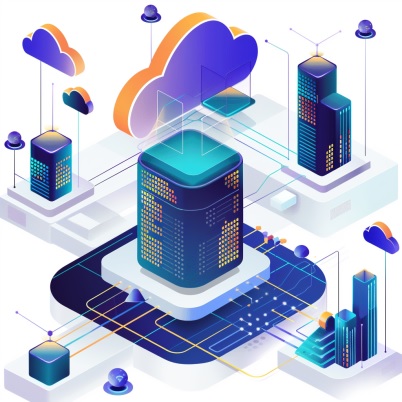Introduction
Leveraging AI for Enhanced Observability : In today’s complex digital landscape, the ability to observe, monitor, and understand the behavior of systems is crucial for maintaining operational efficiency and reliability. This practice, known as observability, has become increasingly challenging with the growing scale and complexity of modern applications and infrastructure. Fortunately, Artificial Intelligence (AI) offers innovative solutions to enhance observability by automating analysis, detecting anomalies, and predicting potential issues before they escalate. This article explores the intersection of AI and observability, delving into specific use cases and scenarios where AI technologies play a transformative role.
Table of Contents
.


Leveraging AI for Enhanced Observability
AI for Enhanced Observability : Understanding Observability
Observability refers to the capability of understanding the internal state of a system or application based on its external outputs. Traditionally, observability has been associated with monitoring metrics, logs, traces, and events to gain insights into system behavior and performance. However, as systems become more distributed and dynamic, traditional observability approaches may fall short in providing comprehensive insights into complex environments.
3. AI for Enhanced Observability: Role of AI in Observability
AI technologies, including machine learning (ML) and deep learning, offer advanced capabilities to augment traditional observability methods. By analyzing vast amounts of data and identifying patterns, anomalies, and correlations, AI enables organizations to gain deeper insights into the health, performance, and security of their systems. Additionally, AI-powered observability solutions can automate mundane tasks, prioritize alerts, and provide predictive insights, thereby empowering teams to focus on strategic initiatives and problem-solving.
4. AI for Enhanced Observability: Use Cases of AI in Observability
4.1. AI for Enhanced Observability: Log Analysis
Logs serve as a treasure trove of information about system events, transactions, errors, and performance metrics. However, manually analyzing logs for anomalies or identifying trends can be time-consuming and error-prone. AI-driven log analysis tools leverage natural language processing (NLP) and pattern recognition algorithms to automatically parse and analyze logs, identify anomalies, and extract actionable insights in real-time.
4.2. AI for Enhanced Observability : Anomaly Detection
Anomalies, deviations from normal behavior, can indicate potential issues or security threats within a system. AI-based anomaly detection algorithms can learn the typical behavior of systems and automatically detect deviations that may signify performance degradation, security breaches, or impending failures. By continuously monitoring metrics, logs, and user behavior, AI-powered anomaly detection systems provide early warnings and help mitigate risks before they impact operations.
4.3. AI for Enhanced Observability : Predictive Maintenance
Predictive maintenance involves using data analytics and AI to predict when equipment or systems are likely to fail, allowing organizations to proactively schedule maintenance activities and avoid unplanned downtime. AI algorithms analyze historical performance data, sensor readings, and environmental factors to forecast equipment failures and degradation patterns. By implementing predictive maintenance strategies, organizations can optimize asset utilization, reduce maintenance costs, and enhance operational reliability.
4.4. AI for Enhanced Observability: Performance Monitoring
AI-driven performance monitoring solutions enable organizations to gain real-time insights into the performance and availability of applications, services, and infrastructure components. By correlating performance metrics with contextual data, such as user interactions and system dependencies, AI algorithms can identify performance bottlenecks, optimize resource allocation, and improve overall system efficiency. Additionally, AI-powered performance monitoring tools can forecast capacity requirements, enabling organizations to scale infrastructure proactively and meet growing demand.
5. AI for Enhanced Observability: Scenarios of AI-Driven Observability
5.1. Network Infrastructure Monitoring
In a large-scale network environment, monitoring the health and performance of network devices, servers, and applications is paramount. AI-based observability platforms can analyze network traffic patterns, detect anomalies, and predict potential failures in real-time. For example, AI algorithms can identify unusual spikes in network traffic indicative of a Distributed Denial of Service (DDoS) attack or anticipate bandwidth constraints based on historical usage patterns, allowing network administrators to take proactive measures to mitigate risks and optimize network performance.
5.2. Application Performance Monitoring
In modern distributed application architectures, monitoring the performance and availability of microservices, containers, and cloud-native applications poses significant challenges. AI-driven observability solutions can analyze application logs, traces, and metrics to identify performance bottlenecks, latency issues, and error patterns. By correlating application performance data with user interactions and business metrics, AI algorithms can prioritize critical issues, optimize resource allocation, and ensure a seamless user experience.
5.3. Cybersecurity Threat Detection
Cybersecurity threats are becoming increasingly sophisticated, making it imperative for organizations to bolster their defense mechanisms. AI-powered observability platforms can analyze security logs, network traffic, and user behavior to detect anomalous activities indicative of potential security breaches or insider threats. By leveraging machine learning algorithms, such as anomaly detection and behavioral analytics, organizations can identify and mitigate security risks in real-time, enhancing their overall cybersecurity posture.
6. AI for Enhanced Observability: Challenges and Considerations
While AI holds immense potential to enhance observability, organizations must address several challenges and considerations, including data quality and integrity, model interpretability, privacy concerns, and algorithmic biases. Additionally, integrating AI-driven observability solutions into existing workflows and infrastructure requires careful planning and collaboration across teams.
7. AI for Enhanced Observability : Future Outlook
The convergence of AI and observability is poised to revolutionize how organizations monitor, analyze, and optimize their systems and applications. As AI technologies continue to evolve, we can expect more sophisticated algorithms, automation capabilities, and predictive insights, enabling organizations to stay ahead of emerging challenges and drive innovation.
8. AI for Enhanced Observability: Conclusion
In conclusion, AI offers a powerful toolkit for enhancing observability across various domains, including IT operations, cybersecurity, and business intelligence. By leveraging AI-driven solutions for log analysis, anomaly detection, predictive maintenance, and performance monitoring, organizations can gain deeper insights into their systems, mitigate risks proactively, and optimize operational efficiency. However, realizing the full potential of AI in observability requires addressing challenges and fostering a culture of innovation and collaboration. As we embark on this journey, the future of observability looks promising, with AI serving as a catalyst for transformative change.
This comprehensive exploration delves into the myriad ways AI is reshaping observability, offering actionable insights and real-world examples to illustrate its transformative potential. From log analysis to predictive maintenance, the fusion of AI and observability promises to unlock new possibilities for organizations seeking to navigate the complexities of the digital landscape with confidence and agility.

